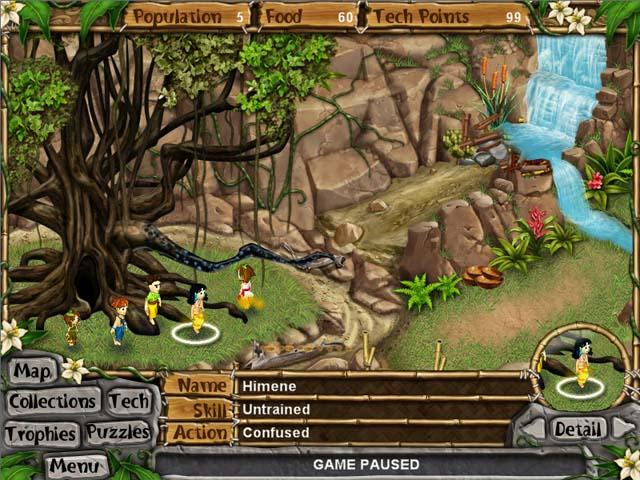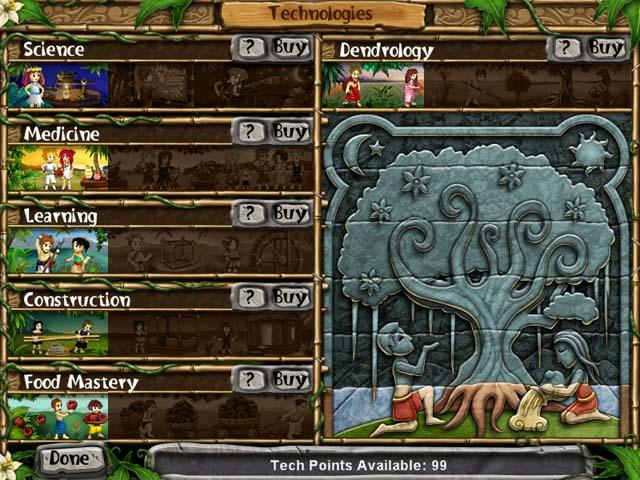- Wondering how to get Monopoly GO! free rolls? Well, you’ve come to the right place. In this guide, we provide you with a bunch of tips and tricks to get some free rolls for the hit new mobile game. We’ll …
Best Roblox Horror Games to Play Right Now – Updated Weekly
By Adele Wilson
Our Best Roblox Horror Games guide features the scariest and most creative experiences to play right now on the platform!The BEST Roblox Games of The Week – Games You Need To Play!
By Sho Roberts
Our feature shares our pick for the Best Roblox Games of the week! With our feature, we guarantee you'll find something new to play!Type Soul Clan Rarity Guide – All Legendary And Common Clans Listed!
By Nathan Ball
Wondering what your odds of rolling a particular Clan are? Wonder no more, with my handy Type Soul Clan Rarity guide.
Virtual Villagers 4: The Tree of Life Review
Something is wrong on the lush island of Isola. Life is drying up. Animals are disappearing, and the once bountiful environment is no longer providing. The chief decides to put together an expeditionary force to head off to the hitherto unexplored eastern shores, where, it is hoped, the root of the problem might be found. So begins Virtual Villagers 4: The Tree of Life, the latest chapter in Last Day of Work’s popular casual sim franchise.

Something is wrong on the lush island of Isola. Life is drying up. Animals are disappearing, and the once bountiful environment is no longer providing. The chief decides to put together an expeditionary force to head off to the hitherto unexplored eastern shores, where, it is hoped, the root of the problem might be found. So begins Virtual Villagers 4: The Tree of Life, the latest chapter in Last Day of Work’s popular casual sim franchise.
We start by surfing through a broad selection of villagers with the aim of creating an ideal initial tribe of five. We choose from men, women, and children ranging in years from toddler to middle age. Each has varying strengths in the game’s five skill categories: farming, research, building, parenting, and healing.
Generally speaking, the older the character, the greater his or her skill level. However, your best bet is to select a mixture of villagers, some old, some young, some male, some female, perhaps one with a baby (a clever way to quickly and easily bump up your tribe’s population by one), and definitely one child—because, as in as in previous entries in the series, kids are the only villagers capable of finding and picking up important artifacts, including scientific instruments, pieces of a mausoleum archway, tubes for a giant wind instrument, and edible mushrooms, which come in very handy when other food sources dry up.

The first thing you’ll note upon arriving at our villagers’ new home is that there is much to explore. Beautifully hand drawn, the village is filled with herb-giving plants, blossoming flowers, various rock piles and formations, the ruins of huts and docks, streams and waterfalls, and plenty of other, more subtle features that take a surprisingly long time to notice and find.
Most of these environmental elements hold some sort of mystery that needs to be discovered and solved. Clearing debris in a stream, for example, will allow it to encircle the village’s centerpiece tree. The diverted water will bring an end to one of the majestic waterfalls, but reveal a keystone that a villager with adequate research skill can examine, move, and place beside the tree to direct the water into a small pool in which our villagers can swim. It will then continue on to create a life-giving stream that will help restore a patch of dying reeds to vitality.
Discoveries like these take place regularly throughout the game as we slowly work to solve sixteen primary puzzles. Achieving most of these milestones is only possible through fortitude, hard work, and a dogged determination. Acquiring tech points, which are necessary for advancing the tribe’s knowledge of medicine, science, construction, and dendrology (the last of which is necessary to cure the game’s titular tree), requires much time and even more patience. And ensuring that our villagers are building their skills—by, say, repeatedly dragging and dropping them onto unfinished huts or the village laboratory—takes a special kind of resolve.
Of course, the irony is that, try as we may, micromanagement is all but impossible. As with its predecessors, Virtual Villagers 4: The Tree of Life continues on day and night, whether the game is running or not. That means you can only guide your little villagers so much before leaving them on their own. When you eventually do come back you may be surprised at what they have accomplished, what mistakes they have made, and who may have died, either through starvation or old age.

But this has always been part of the series’ appeal. That it’s necessary for us to step back and let our little villagers live their lives on their own is a large part Virtual Villagers‘ distinct charm. It turns players into the gaming equivalent of worried parents. We end up booting up the game whenever we have a chance just to check up on our little tribe and make sure that they’re on the right path.
Another feature sure to keep players coming back is the game’s trophy system. Trophies aren’t new for the series, but there are an unprecedented 80 achievements waiting to be unlocked in this latest installment, ranging from the simple—having a pair of your villagers mate successfully—to what can only be described as the obsessive—such as collecting 1,000,000 units of food or bringing 100 villagers to the level of skill masters. I don’t even want to fathom a guess at how long it might take a compulsive player to earn them all.
To say that Virtual Villagers 4: The Tree of Life is just more of the same is both accurate and an over simplification. To be sure, returning players will instantly recognize its design, interface, and play style (and lament deficiencies shared by its predecessors—we still can’t scroll out to view the entire village, alas). But the simple truth is that this game, like its forerunners, is an undeniably fun and long-lasting play bursting with clever new environmental conundrums.
Put more simply, if there’s something wrong with Virtual Villagers‘ formula, then I don’t want Last Day of Work to make it right.

The good

The bad
More articles...
Monopoly GO! Free Rolls – Links For Free Dice
By Glen Fox
Wondering how to get Monopoly GO! free rolls? Well, you’ve come to the right place. In this guide, we provide you with a bunch of tips and tricks to get some free rolls for the hit new mobile game. We’ll …Best Roblox Horror Games to Play Right Now – Updated Weekly
By Adele Wilson
Our Best Roblox Horror Games guide features the scariest and most creative experiences to play right now on the platform!The BEST Roblox Games of The Week – Games You Need To Play!
By Sho Roberts
Our feature shares our pick for the Best Roblox Games of the week! With our feature, we guarantee you'll find something new to play!Type Soul Clan Rarity Guide – All Legendary And Common Clans Listed!
By Nathan Ball
Wondering what your odds of rolling a particular Clan are? Wonder no more, with my handy Type Soul Clan Rarity guide.







